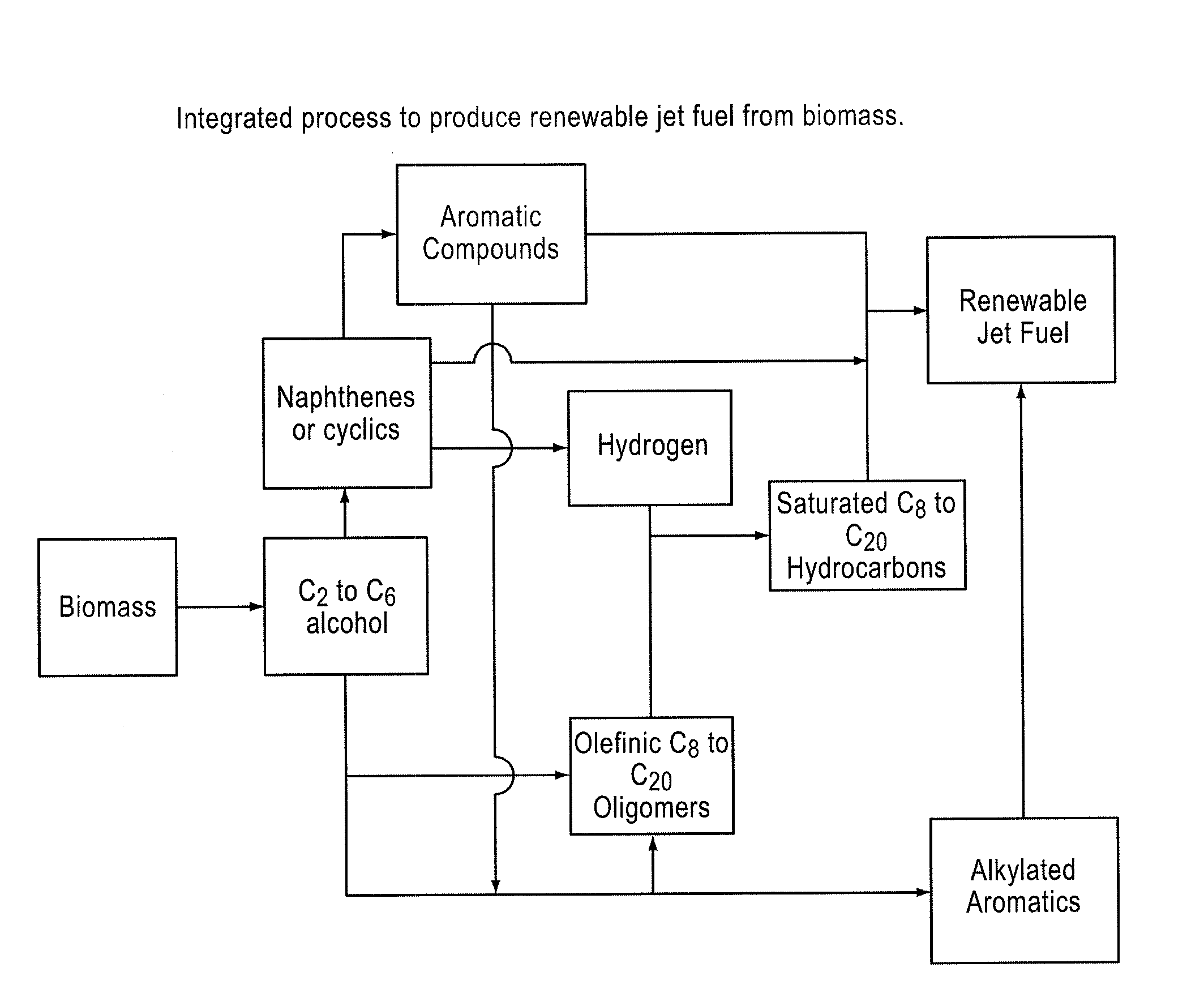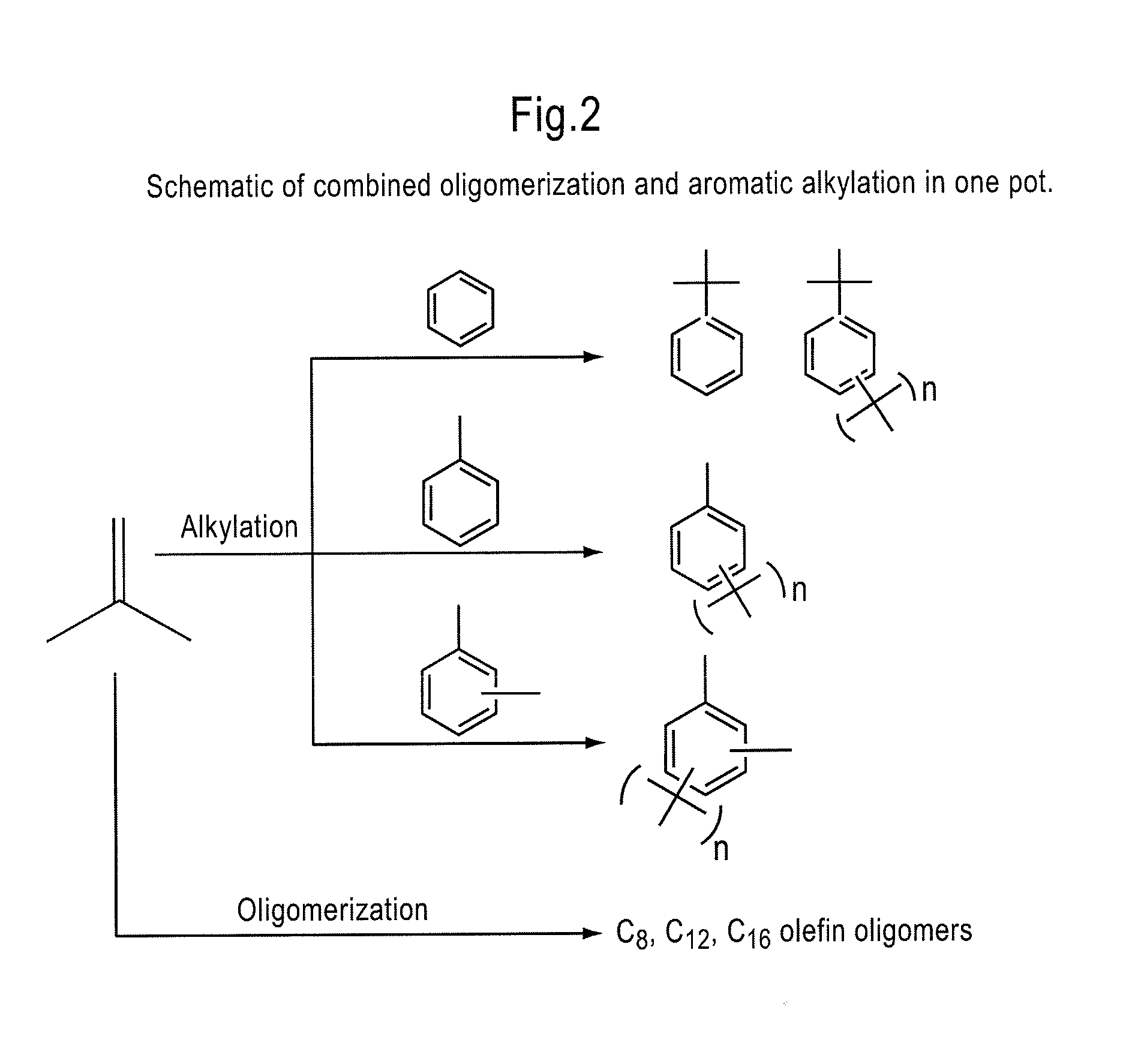Renewable Compositions
a technology of compositions and renewable materials, applied in the field of renewable compositions, can solve the problems of significant increase in fuel cost, overdependence on unreliable petroleum supplies from politically unstable, and environmental degradation of petroleum as a basic raw material
- Summary
- Abstract
- Description
- Claims
- Application Information
AI Technical Summary
Benefits of technology
Problems solved by technology
Method used
Image
Examples
example 1
[0229]An overnight culture was started in a 250 mL Erlenmeyer flask with microorganism from a freezer stock (e.g., Escherichia coli modified to produce isobutanol) with a 40 mL volume of modified M9 medium consisting of 85 g / L glucose, 20 g / L yeast extract, 20 μM ferric citrate, 5.72 mg / L H3BO3, 3.62 mg / L MnCl2.4H2O, 0.444 mg / L ZnSO4.7H2O, 0.78 mg / L Na2MnO4.2H2O, 0.158 mg / L CuSO4.5H2O, 0.0988 mg / L CoCl2.6H2O, 6.0 g / L NaHPO4, 3.0 g / L KH2PO4, 0.5 g / L NaCl, 2.0 g / L NH4Cl, 0.0444 g / L MgSO4, and 0.00481 g / L CaCl2 and at a culture OD600 of 0.02 to 0.05. The starter culture was grown for approximately 14 hrs in a 30° C. shaker at 250 rpm. Some of the starter culture was then transferred to a 400 mL DasGip fermentor vessel containing about 200 mL of modified M9 medium to achieve an initial culture OD600 of about 0.1. The vessel was attached to a computer control system to monitor and control the fermentation to a pH of 6.5 (by appropriate addition of base), a temperat...
example 2
[0230]23 g of a commercial γ-alumina catalyst was loaded into a fixed-bed tubular reactor. Wet isobutanol containing about 12% water was fed through a preheater and onto the catalyst bed. The internal reactor temperature was maintained at 310° C., and the WHSV of the isobutanol was ˜6 hr−1. Isobutylene and water containing about 99%, and GC-MS analysis of the gas phase effluent indicated it was >90% isobutylene with the remainder comprising linear butenes.
example 3
[0231]20 mL of wet isobutanol containing 15% water was reacted in a batch reactor over 2 gm of Zeolite-Y CBV-780 at 220° C. The reactor pressure increased from atmospheric pressure to 350 psig. Conversion of isobutanol was about 25% and GC-MS analysis indicated the product mixture was >90% isobutylene and <10% linear butenes.
PUM
| Property | Measurement | Unit |
|---|---|---|
| Fraction | aaaaa | aaaaa |
| Fraction | aaaaa | aaaaa |
| Fraction | aaaaa | aaaaa |
Abstract
Description
Claims
Application Information
 Login to View More
Login to View More - R&D
- Intellectual Property
- Life Sciences
- Materials
- Tech Scout
- Unparalleled Data Quality
- Higher Quality Content
- 60% Fewer Hallucinations
Browse by: Latest US Patents, China's latest patents, Technical Efficacy Thesaurus, Application Domain, Technology Topic, Popular Technical Reports.
© 2025 PatSnap. All rights reserved.Legal|Privacy policy|Modern Slavery Act Transparency Statement|Sitemap|About US| Contact US: help@patsnap.com



